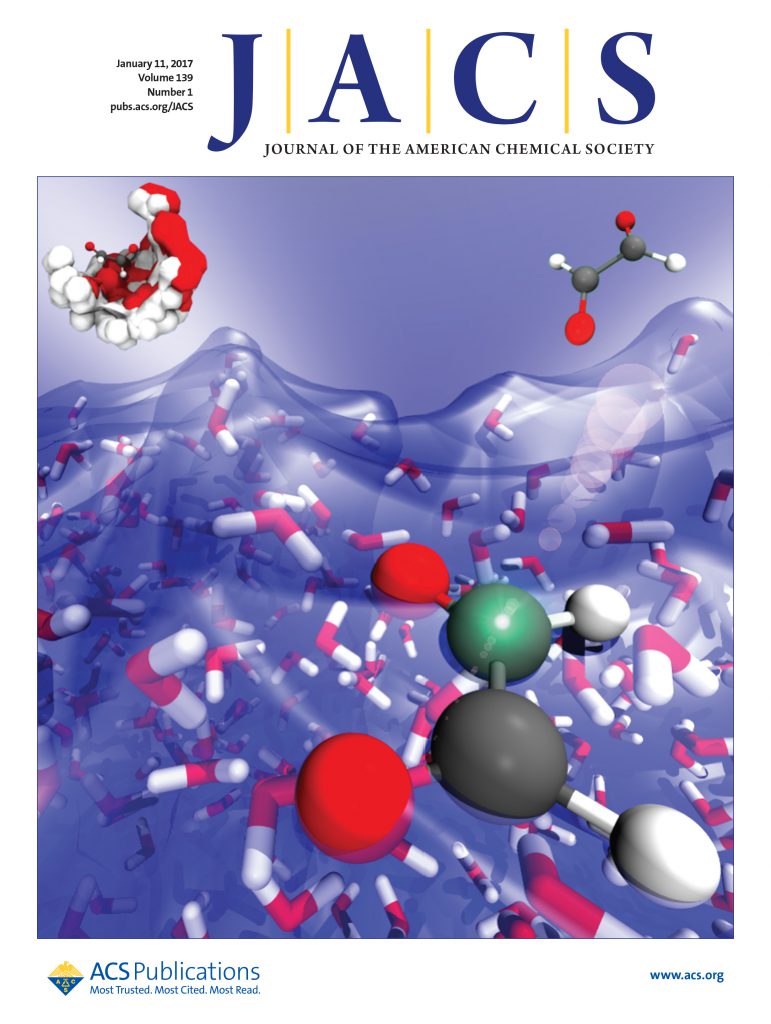Machine Learnable Language for the Chemical Space of Nanopores Enables Structure–Property Relationships in Nanoporous 2D Materials
IF 14.4
1区 化学
Q1 CHEMISTRY, MULTIDISCIPLINARY
引用次数: 0
Abstract
The synthesis of nanoporous two-dimensional (2D) materials has revolutionized fields such as membrane separations, DNA sequencing, and osmotic power harvesting. Nanopores in 2D materials significantly modulate their optoelectronic, magnetic, and barrier properties. However, the large number of possible nanopore isomers makes their study onerous, while the lack of machine-learnable representations stymies progress toward structure–property relationships. Here, we develop a language for nanopores in 2D materials, called STring Representation Of Nanopore Geometry (STRONG), that opens the field of 2D nanopore informatics. We show that STRONGs are naturally suited for machine learning via recurrent neural networks, predicting formation energies/times of arbitrary nanopores and transport barriers for CO2, N2, and O2 gas molecules, enabling structure–property relationships. The machine learning models enable the discovery of specific nanopore topologies to separate CO2/N2, O2/CO2, and O2/N2 gas mixtures with high selectivity ratios. We also enable the rapid enumeration of unique configurations of stable, functionalized nanopores in 2D materials via STRONGs, allowing systematic searching of the vast chemical space of nanopores. Using the STRONGs approach, we find that a mix of hydrogen and quinone functionalization results in the most stable functionalized nanopore configuration in graphene, a discovery made feasible by expedited chemical space exploration. Additionally, we also unravel the STRONGs approach as ∼1000 times faster than graph theory algorithms to distinguish nanopore shapes. These advances in the language-based representation of 2D nanopores will accelerate the tailored design of nanoporous materials.

纳米孔化学空间的机器可学习语言可实现纳米多孔二维材料的结构-性能关系
纳米多孔二维(2D)材料的合成给膜分离、DNA 测序和渗透动力收集等领域带来了革命性的变化。二维材料中的纳米孔可显著调节其光电、磁性和阻隔特性。然而,大量可能的纳米孔异构体使得对它们的研究变得繁重,而缺乏机器可学习的表示方法阻碍了结构-性能关系的研究进展。在这里,我们为二维材料中的纳米孔开发了一种语言,称为 "纳米孔几何的字符串表示法(STring Representation Of Nanopore Geometry,STRONG)",它开辟了二维纳米孔信息学领域。我们的研究表明,STRONG 自然适合通过递归神经网络进行机器学习,预测任意纳米孔的形成能量/时间以及二氧化碳、二氧化氮和氧气气体分子的传输障碍,从而建立结构-性能关系。机器学习模型能够发现特定的纳米孔拓扑结构,从而以高选择性比分离 CO2/N2、O2/CO2 和 O2/N2 混合气体。我们还能通过 STRONGs 快速枚举二维材料中稳定、功能化纳米孔的独特构型,从而对纳米孔的巨大化学空间进行系统搜索。利用 STRONGs 方法,我们发现氢和醌官能化的混合会在石墨烯中产生最稳定的官能化纳米孔构型,这一发现是通过加快化学空间探索实现的。此外,我们还发现 STRONGs 方法在区分纳米孔形状方面比图论算法快 1000 倍。这些基于语言的二维纳米孔表示方法的进步将加速纳米多孔材料的定制设计。
本文章由计算机程序翻译,如有差异,请以英文原文为准。
求助全文
约1分钟内获得全文
求助全文
来源期刊
CiteScore
24.40
自引率
6.00%
发文量
2398
审稿时长
1.6 months
期刊介绍:
The flagship journal of the American Chemical Society, known as the Journal of the American Chemical Society (JACS), has been a prestigious publication since its establishment in 1879. It holds a preeminent position in the field of chemistry and related interdisciplinary sciences. JACS is committed to disseminating cutting-edge research papers, covering a wide range of topics, and encompasses approximately 19,000 pages of Articles, Communications, and Perspectives annually. With a weekly publication frequency, JACS plays a vital role in advancing the field of chemistry by providing essential research.

 求助内容:
求助内容: 应助结果提醒方式:
应助结果提醒方式:


